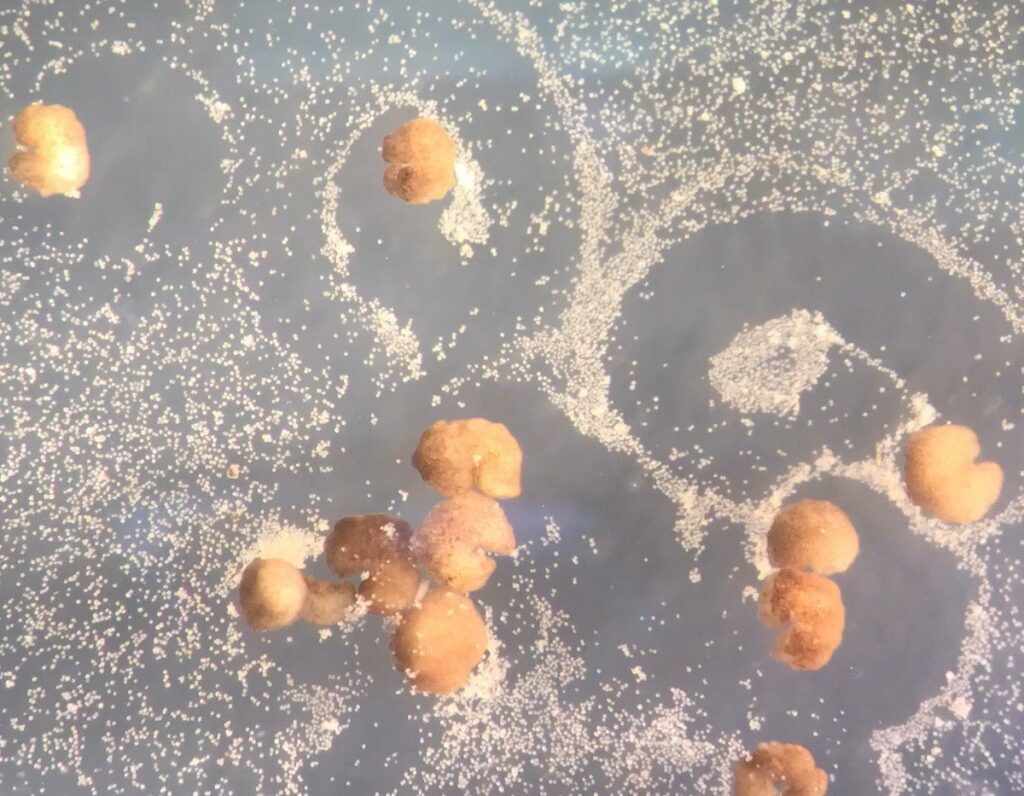What are Xenobots?
Last year, a team of computer scientists and biologists from Tufts university and University of Vermont (UVM) created unique, small robots from frogs. The Xenobots are made from the stem cells of an African clawed frog called Xenopus laevis. The cells have tiny little hair like projections called cilia that helps them to move around a petri dish. Hence, they are less than a millimeter (0.04 inches) wide, small enough to travel inside human body. At that time, researchers announced that these organisms were self-healing. They work in groups, survive for weeks without food and can walk and swim. “These are novel living machines,” said Joshua Bongard, one of the lead researchers at the University of Vermont. “They’re neither a traditional robot nor a known species of animal. It’s a new class of artifact: a living, programmable organism.”
Sam Kriegman explained that Xenobots are not like traditional robots, they do not have metallic/shiny robotic arms or gears. Rather, they are more like a small blob of pink moving flesh. According to the researchers, this biological machine can do things no ordinary plastic or steel robot can achieve. “We tried to figure out what useful work they could do, and one of the things that we came up with was to clean up the dish,” Kriegman said.
Self-replicating ability

Experts have found that now, Xenobots have the capability to reproduce on an entirely new way. “People have thought for quite a long time that we’ve worked out all the ways that life can reproduce or replicate. But this is something that’s never been observed before,” added Douglas Blackiston, Ph.D., a senior scientist at Tufts University.
The researchers put dye particles and silicone-coated iron beads in petri dish. They observed that Xenobots were piling up debris. So, Kriegman described Xenobots as bulldozers that move around the stem cells into piles. “I said, ‘Oh my God, that’s amazing. What happens when they make the piles. What do the cells become when they’re piles?’ We didn’t know,” Kriegman said. “We found out by letting those piles develop over the course of a few days, and then bringing them into a new dish and seeing if they can move.”
This pointed towards the piles developing into the offspring of stem cells. Thus, making their own cilia and working on their own. “If there’s enough of the stem cells in a pile, they will start to develop and will compact together in a sphere,” Kriegman said. “They’ll grow cilia, and that allows them to move, and in some cases, also make additional piles, and those piles become their offspring.”
“With the right design, they will spontaneously self-replicate,” said Josh Bongard, a computer science professor and robotics expert at the University of Vermont. “This is profound,” said Michael Levin, a biology professor and director of the Allen Discovery Center at Tufts University. “These cells have the genome of a frog, but, freed from becoming tadpoles, they use their collective intelligence, to do something astounding.”
Follow-up
The concept of robots being able to reproduce themselves on their own may turn out to be scary. “We are working to understand this property: replication. The world and technologies are rapidly changing. It’s important, for society as a whole, that we study and understand how this works,” Bongard explained. So, having greater understanding of this type of self-replication biotechnology can have practical uses like regenerative medicine.
“If we knew how to tell collections of cells to do what we wanted them to do. Ultimately, that’s regenerative medicine, that’s the solution to traumatic injury, birth defects, cancer, and aging,” Bongard added. “All of these different problems are here because we don’t know how to predict and control what groups of cells are going to build. Xenobots are a new platform for teaching us.”
